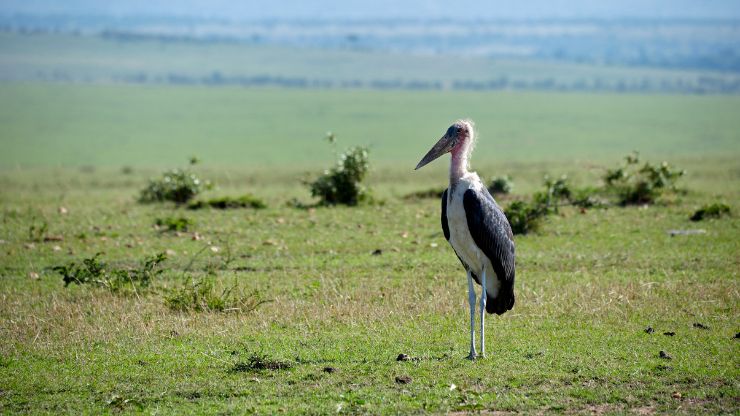In the vast realm of avian diversity, certain species stand out not just for their beauty or uniqueness but for their sheer size. From towering flightless giants to majestic soaring birds, the avian world boasts an array of colossal creatures that captivate the imagination. In this blog, we delve into the realm of the largest birds on Earth, exploring their impressive physical dimensions, habitats, behaviors, and ecological roles. From the mighty ostrich to the iconic albatross, these avian giants offer a glimpse into the fascinating world of birds that push the boundaries of size and strength. Join us on a journey of discovery as we unveil nine of the biggest and most remarkable birds that roam our planet, showcasing the wonders of nature’s grandeur and diversity.
Table of Contents
ToggleBiggest Birds on Earth
1. Wandering Albatross (Diomedea exulans)

The Wandering Albatross is a majestic seabird that holds the prestigious title of being the largest bird in the world. With its awe-inspiring wingspan, confirmed by the International Union for the Conservation of Nature (IUCN) to reach over 11 feet (3.4 meters), these birds are truly a marvel of nature. They are known for their remarkable ability to glide effortlessly over vast ocean expanses, utilizing oceanic winds to cover enormous distances in search of food. The Wandering Albatross is predominantly found in the Southern Ocean, where they spend most of their lives soaring gracefully above the waves. Their long, slender wings and expert gliding skills make them superbly adapted for life at sea, where they forage for fish, squid, and other marine creatures.
For More – 8 Deadliest Animals In North America
2. Ostrich (Struthio camelus)
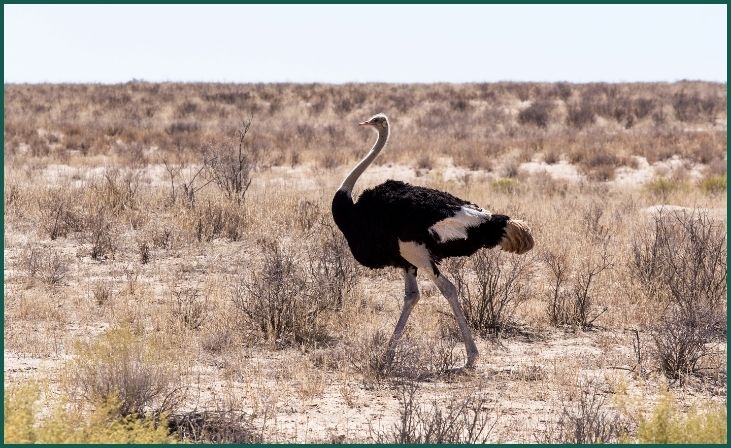
The Ostrich is a fascinating and iconic bird, renowned for being the largest and heaviest bird on Earth. These flightless birds can tower up to nine feet (2.7 meters) tall and weigh an impressive 287 pounds (130 kilograms). Native to Africa, ostriches inhabit savannas, grasslands, and desert regions, where their powerful legs and swift running abilities help them evade predators. Despite their inability to fly, ostriches are incredibly fast runners, capable of reaching speeds up to 43 miles per hour (70 kilometers per hour). They have distinctive long necks, large eyes, and a curious nature that adds to their charm and intrigue.
3. Greater Rhea (Rhea americana)
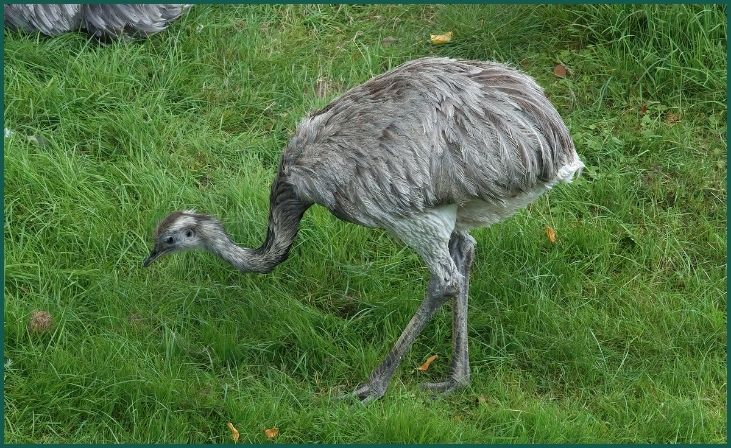
The Greater Rhea is a close relative of the ostrich and the largest bird native to South America. While not as massive as the ostrich, these flightless birds still command attention with their impressive size and stature. They stand at around four to five feet tall (1.2 to 1.5 meters) and can weigh up to 88 pounds (40 kilograms). Greater Rheas are primarily found in grasslands, shrublands, and savannas across South America, where they feed on a varied diet of plants, insects, and small vertebrates. Their long legs and streamlined bodies enable them to move swiftly across open terrain, making them well-adapted to their native habitats.
4. Cassowary (Casuarius casuarius)
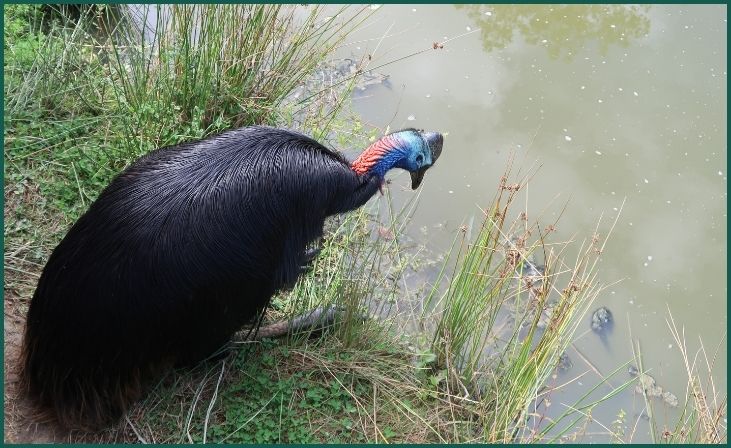
The Cassowary is a striking and enigmatic bird native to the rainforests of New Guinea and northern Australia. Despite not being the largest bird in terms of height, these flightless birds are robust and formidable, with a height ranging from 4 to 6 feet (1.2 to 1.8 meters) and a weight of up to 130 pounds (60 kilograms). What sets the Cassowary apart are its unique features, including a casque on its head, vibrant blue and red skin on its neck, and powerful legs armed with dagger-like claws. They play a crucial role in the ecosystem as seed dispersers and are known for their shy yet territorial behavior.
5. Dalmatian Pelican (Pelecanus crispus)

The Dalmatian Pelican stands out not only as the largest species of pelican but also as one of the largest flying birds in the world. These magnificent birds boast a wingspan that can exceed 11 feet (3.5 meters), making them a spectacle to behold in flight. They are primarily found in Europe and Asia, inhabiting freshwater lakes, rivers, and wetlands. Dalmatian Pelicans are expert fishers, using their large, pouched bills to scoop up fish and other aquatic prey. Their impressive aerial presence and striking appearance, with white plumage and a distinctive throat pouch, make them a favorite subject for birdwatchers and nature enthusiasts.
Don't just scroll, subscribe!
BuzzTrail's unique web-stories are the cure for boredom you've been waiting for.
6. Shoebill (Balaeniceps rex)

The Shoebill, also known as the whale-headed stork, is a fascinating bird found in the swamps and marshes of Central Africa. While not the largest in terms of height, standing around five feet (1.5 meters) tall, these birds possess a unique and captivating appearance. Their name comes from their distinctive bill, which resembles a Dutch clog or shoe. Shoebills are skilled hunters, preying on fish, amphibians, and even small mammals in their watery habitats. Despite their somewhat comical appearance, these birds are formidable predators, using their powerful bills to capture and dispatch prey with precision.
7. Great Bustard (Otis tarda)

The Great Bustard is a magnificent bird and holds the title of being the largest land bird in Europe. These impressive birds can weigh up to 40 pounds (18 kilograms) and have a wingspan of around 8 feet (2.5 meters). They are predominantly found in open grasslands, steppes, and agricultural fields across Central Asia, Russia, and parts of Europe. Great Bustards are known for their elaborate courtship displays, where males puff up their feathers and perform intricate dances to attract females during the breeding season. Despite their large size, they are skilled fliers and can cover considerable distances during their seasonal migrations.
8. Emperor Penguin (Aptenodytes forsteri)
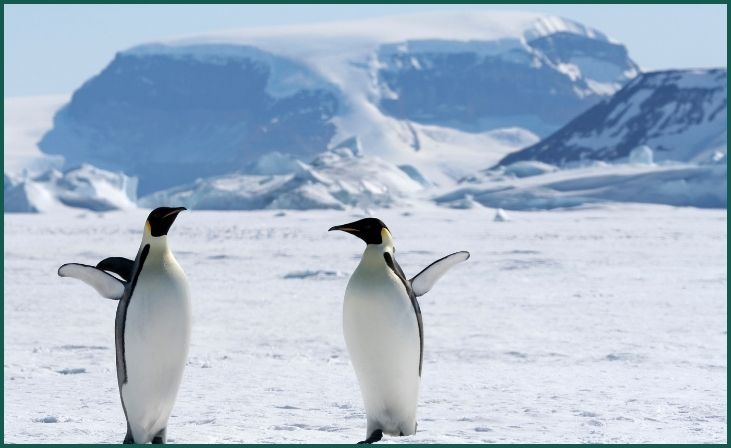
The Emperor Penguin is the largest of all penguin species and a true symbol of resilience in Antarctica’s harsh environment. These majestic birds stand about 3.7 feet (1.1 meters) tall and can weigh up to 88 pounds (40 kilograms). Emperor Penguins are uniquely adapted to life in icy realms, with thick layers of insulating feathers and specialized behaviors for surviving extreme cold. They gather in massive colonies, huddling together for warmth during the brutal Antarctic winters. Emperor Penguins are renowned for their epic breeding journeys, where they trek long distances over ice to reach their breeding grounds and rear their chicks in challenging conditions.
9. Andean Condor (Vultur gryphus)
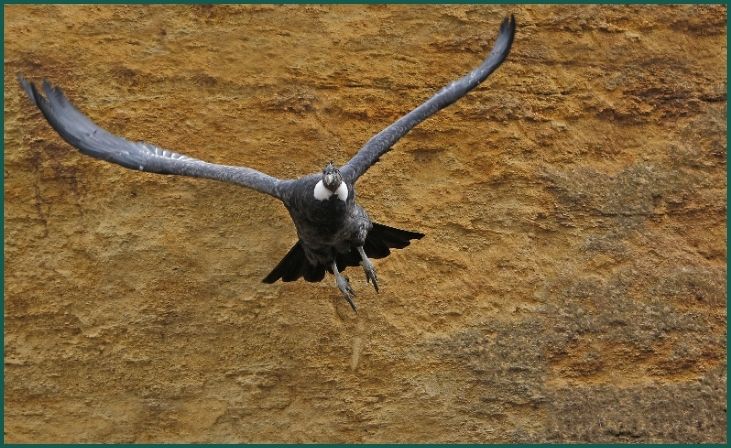
The Andean Condor is a symbol of power and majesty, recognized as the largest raptor species globally. These impressive birds boast a wingspan of around 10.5 feet (3.2 meters) and are found soaring over the Andes Mountains of South America. Andean Condors play a vital role in their ecosystems as scavengers, feeding on carrion and helping maintain ecological balance. They are revered in Andean cultures and are often associated with myths and legends. Despite their immense size, Andean Condors are graceful fliers, effortlessly riding thermal currents as they scan the landscape for food.
Also Read- 8 Most Beautiful Animals on the Planet
Conclusion
In the vast and diverse world of avian species, these nine birds stand out as some of the biggest and most impressive. From soaring albatrosses to powerful condors, each bird showcases unique adaptations and behaviors that make them fascinating subjects of study and admiration. Their immense size and remarkable abilities highlight the incredible diversity of life on Earth, reminding us of the wonders that exist in the natural world.
FAQs
Are these birds endangered?
Are these birds endangered?
Some of these birds, such as the Wandering Albatross and Andean Condor, face conservation challenges due to habitat loss, pollution, and other human-related factors. Conservation efforts are underway to protect these species and their habitats.
What is the significance of these large birds in ecosystems?
What is the significance of these large birds in ecosystems?
Large birds like the Dalmatian Pelican and Andean Condor play crucial roles as apex predators or scavengers, helping regulate ecosystems by controlling prey populations and recycling nutrients.

